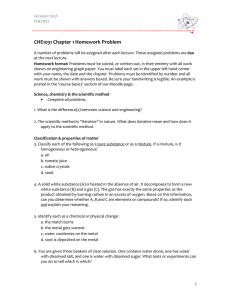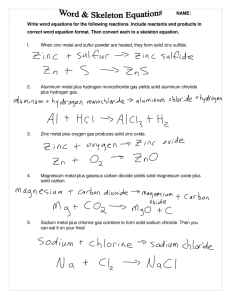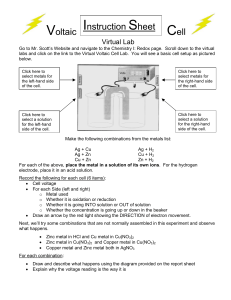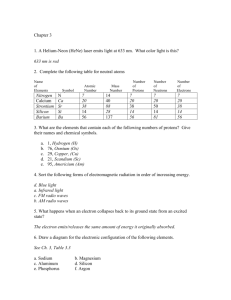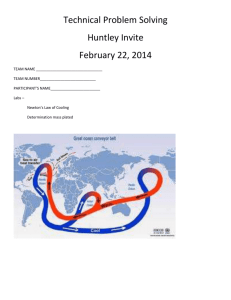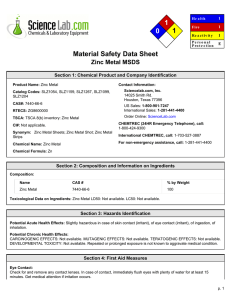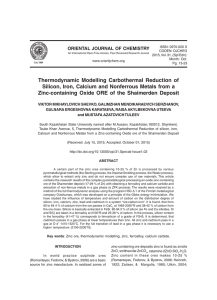File
advertisement
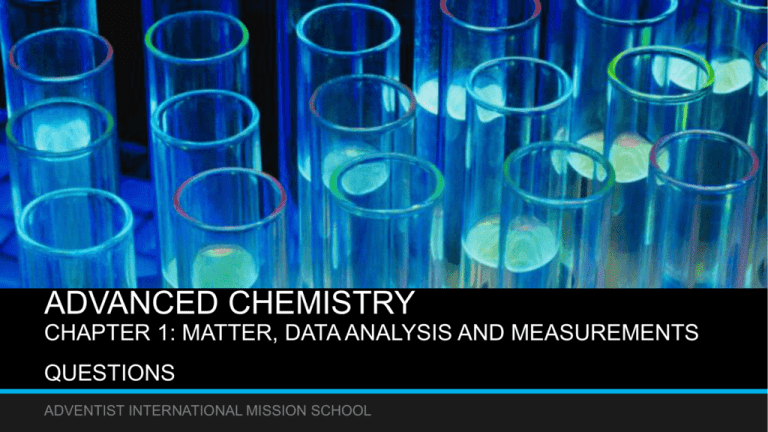
ADVANCED CHEMISTRY CHAPTER 1: MATTER, DATA ANALYSIS AND MEASUREMENTS QUESTIONS ADVENTIST INTERNATIONAL MISSION SCHOOL QUESTION 1 • Classify each of the following as a pure substance or a mixture. If a mixture, indicate whether it is homogeneous or heterogeneous: (a) air, (b) tomato juice, (c) iodine crystals, (d) sand. QUESTION 2 • Read the following description of the element zinc and indicate which are physical properties and which are chemical properties. Zinc is a silver-gray–colored metal that melts at 420 °C. When zinc granules are added to dilute sulfuric acid, hydrogen is given off and the metal dissolves.Zinc has a hardness on the Mohs scale of 2.5 and a density of at 25 °C. It reacts slowly with oxygen gas at elevated temperatures to form zinc oxide,ZnO. QUESTION 3 • (a) The temperature on a warm summer day is 87 °F. What is the temperature in °C? (b)Many scientific data are reported at 25 °C. What is this temperature in kelvins and in degrees Fahrenheit? (c)Suppose that a recipe calls for an oven temperature of 400 °F. Convert this temperature to degrees Celsius and to kelvins. (d) Liquid nitrogen boils at 77 K. Convert this temperature to degrees Fahrenheit and to degrees Celsius. QUESTION 4 • Label each of the following as either a physical process or a chemical process: (a) rusting of a metal can, (b) boiling a cup of water, (c) pulverizing an aspirin, (d) digesting a candy bar, (e) exploding of nitroglycerin. QUESTION 5 • Use appropriate metric prefixes to write the following measurements without use of exponents: • (a) 23 × 10−10 L • (b) 4.7 × 10−6 g • (c) 1.85 × 10−12 𝑚 • (d) 16.7 × 106 s • (e) ,15.7 × 106 𝑔 • f) 1.34 × 10−3 𝐿 • g) 1.84 × 102 𝐿 QUESTION 6 • (a) A cube of osmium metal 1.500 cm on a side has a mass of 76.31 g at 25 °C. What is its density in at this temperature? (b) The density of titanium metal is at 25 °C. What mass of titanium displaces 125.0 mL of water at 25 °C? (c) The density of benzene at 15 °C is . Calculate the mass of 0.1500 L of benzene at this temperature. QUESTION 7 • Silicon for computer chips is grown in large cylinders called “boules”that are 300 mm in diameter and 2 m in height. The density of silicon is . Silicon wafers for making integrated circuits are sliced from a 2.0 m boule and are typically 0.75 mm thick and 300 mm in diameter. (a) How many wafers can be cut from a single boule? (b) What is the mass of a silicon wafer? (The volume of a cylinder is given by , where r is the radius and h is its height.) QUESTION 8 • Carry out the following operations, and express the answer with the appropriate number of significant figures. QUESTION 9 QUESTION 10 QUESTION 11


